A MODERN TOWN
From the events of the Royal Free Town of Podgórze 1784–1915
For the area of Krzemionki, a key role was played by efficient communication with the north bank of the river. The solid wooden Wielicki Bridge served merchants and local residents until it burnt down in 1655. The next, less durable, constructions were not able to satisfy the increasing movement of goods. After the partitions, the Austrian rulers wanted to connect the new areas with the rest of the country, so the construction of a bridge seemed to be a necessity. A wooden object was opened for use in 1802, named after the Arch-duke Charles Habsburg, but it served for just ten years before it was destroyed by a flood in 1813.
For the next half a century, Kraków and Podgórze were connected with a floating bridge consisting of 2 rafts on the banks and a so-called moving centre. Susceptible to the currents of the river, the spring floods and floating ice, it required a general renovation on average every three years. The bridge was taken care of by a special worker known as a bridgeman. His duties consisted of ensuring safety, maintaining cleanness, as well as hiring and supervising people who assembled and disassembled the bridge.
In the years 1844–1850, at the ends of Mostowa and Gazowa streets (currently Brodzińskiego) a permanent bridge designed by Tomasz Kutschery was built. Officially named after Emperor Franz Joseph, but known by the inhabitants as the Podgórze bridge, it was built from larch wood on walled pillars, with the help of modern steam engines. Between it and the Karol Ludwik railway station in Kraków travelled public transport vehicles – omnibuses (1867) and horse-drawn trams (1882). As a result of the deepening trough of the Vistula, the bridge construction was disturbed and it was feared that it could collapse. The bridge was temporarily closed in 1925, modernized and re-opened in 1926. Until 1936 it filled the role of a footbridge, with the fees for usage being designated for the construction of the neighbouring II Bridge.
At the ends of Starowiślna and Na Zjeździe Streets, the so-called III Bridge, named Krakus Bridge, was built. Opened for use on 20 January 1913, designed in Vienna, and manufactured in the factory of Zieleniewski, it captivated with its iron construction. Electric lighting was conducted across the bridge, and in 1917 a tram line was activated. Destroyed by the German army in 1945, it was rebuilt in the 1970s and currently has the name of Powstańców Śląskich.
Besides the objects designated for pedestrians and vehicles in the years 1854–1856 over the Old (Grzegórzki) and New Vistula (Zabłocie), there were also two wooden railway bridges, across which the Imperial-Royal Eastern Railway line, combining Kraków with Dębica, ran. In 1864, the bridge over the New Vistula was rebuilt into a steel one, whereas in 1884 it was replaced by two lattice truss bridges.
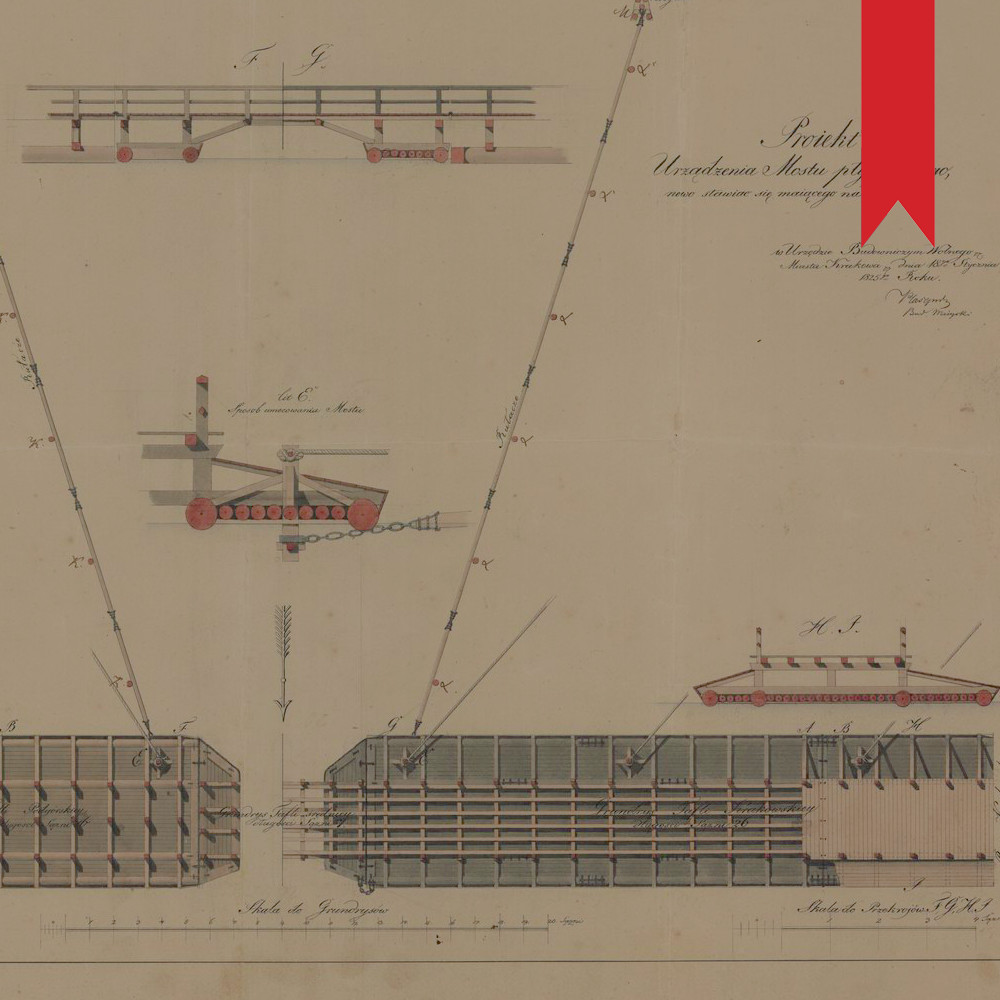
Design of the floating bridge connecting Kraków with Podgórze, 1825
(ANK, ref. no. WMK V-79a, p. 159)
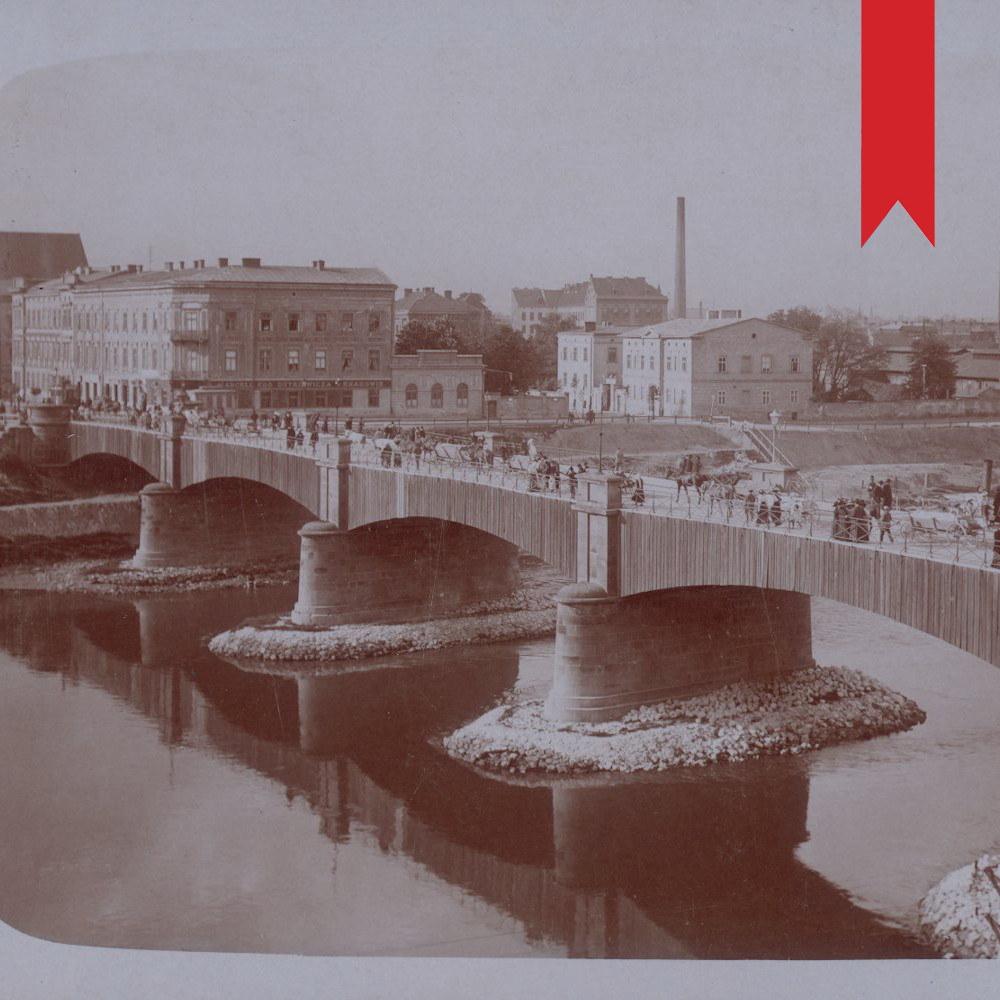
Franz Joseph Bridge (Podgórski Bridge), 1911
(ANK, ref. no. A-II-342)
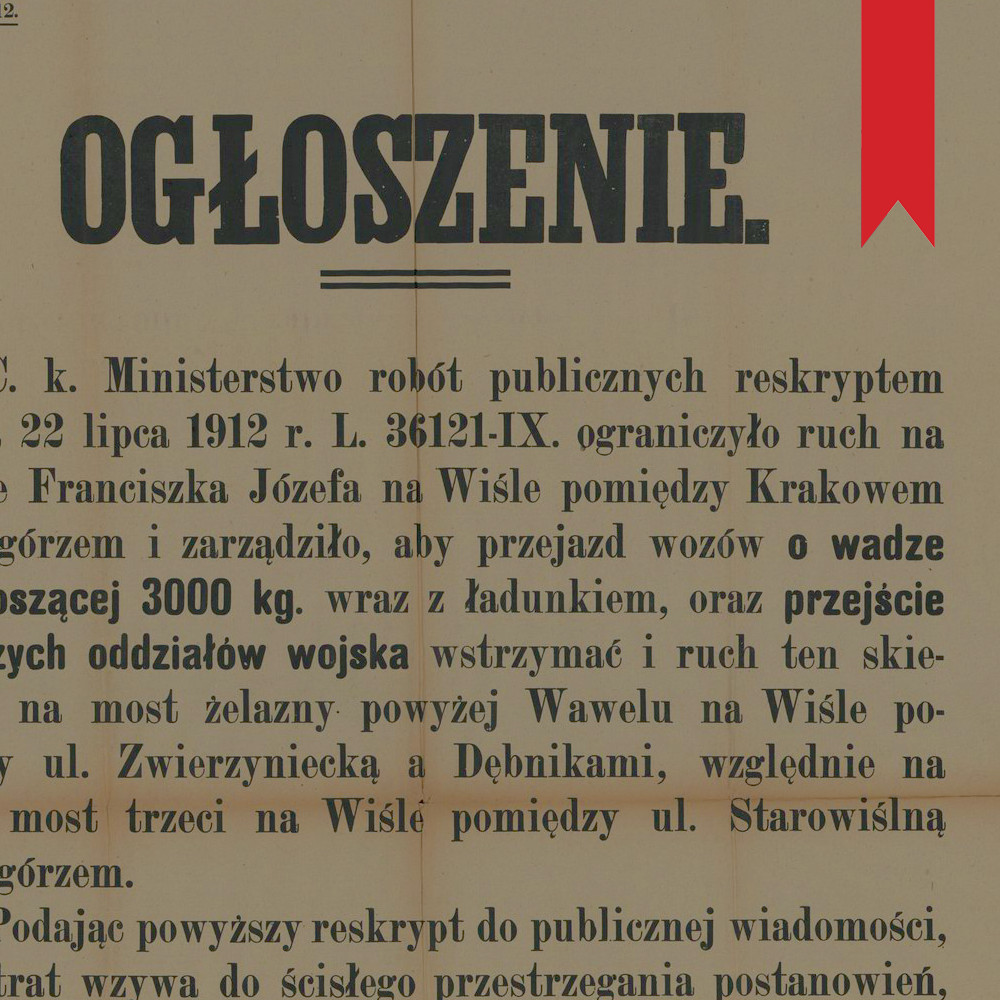
Announcement of the Town Hall of Kraków from 28 January 1913
(ANK, ref. no. Kr 6582, p. 225)
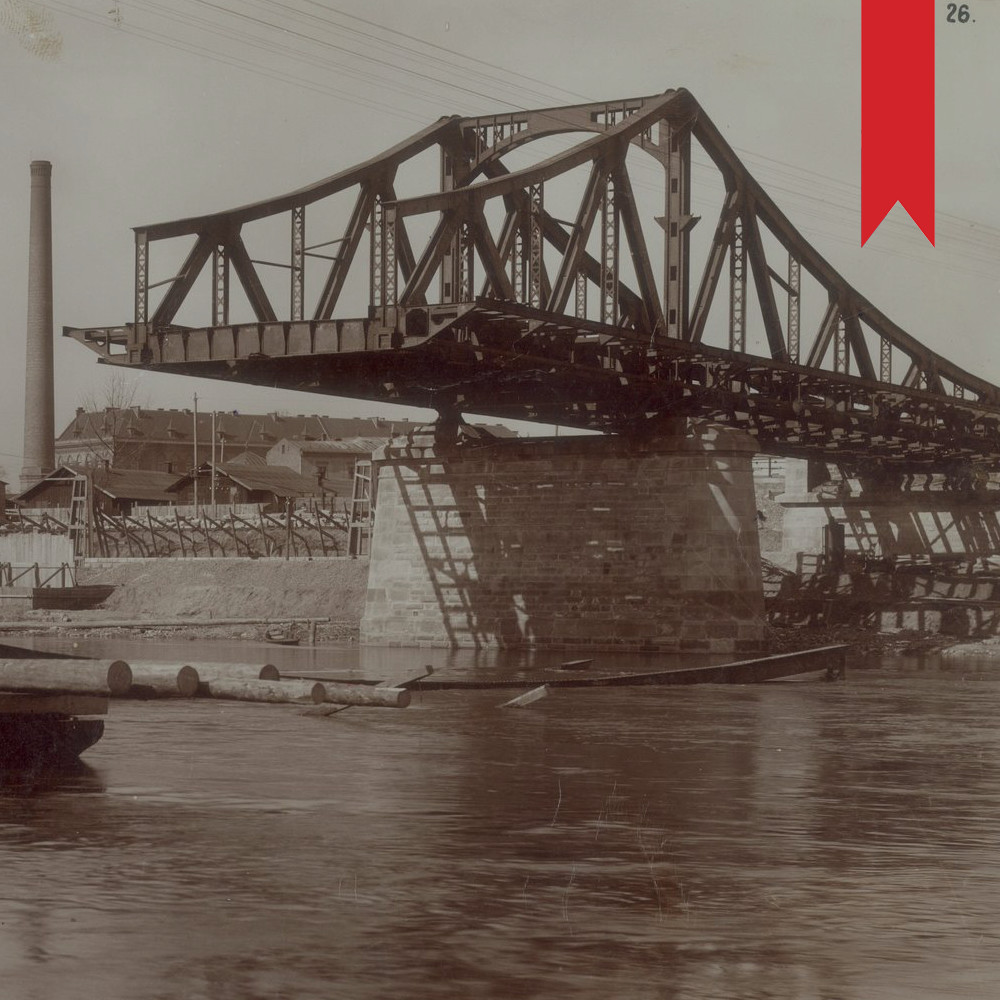
Construction of III Bridge over the Vistula, 1910
(ANK, ref. no. DRP 346A)
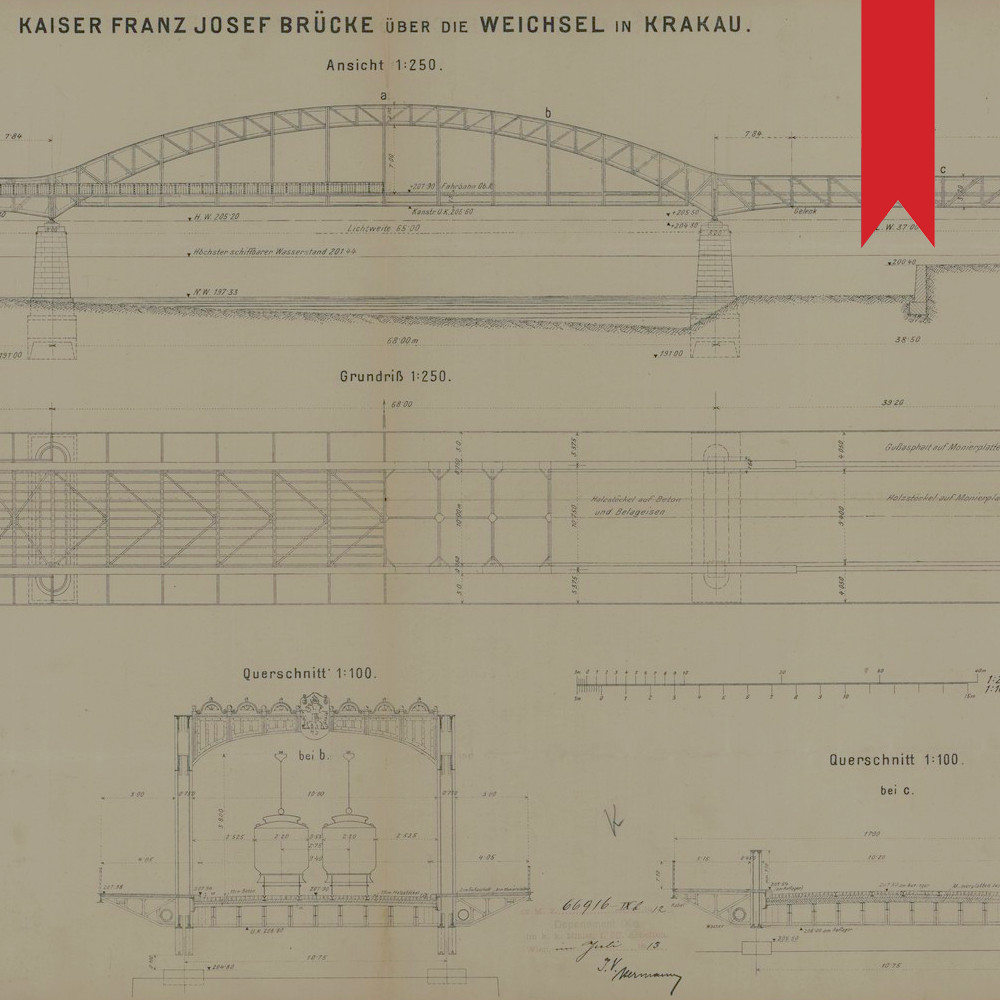
Design of the so-called II Franz Joseph Bridge, July 1913. Due to the deteriorating state of Podgórski Bridge, in the first years of the 20th century a general renovation was planned together with its movement towards Krakówska and 3 Maja Streets (currently Legionów Piłsudskiego) or the construction of a new object. In 1906, during work on embankments of the Vistula, a stone bridgehead was erected, which was to represent the beginning of a new construction. The plans were finalized only during the years 1926–1933. The new bridge was named Józef Piłsudski
(ANK, ref. no. Kr 6582, p. 449)
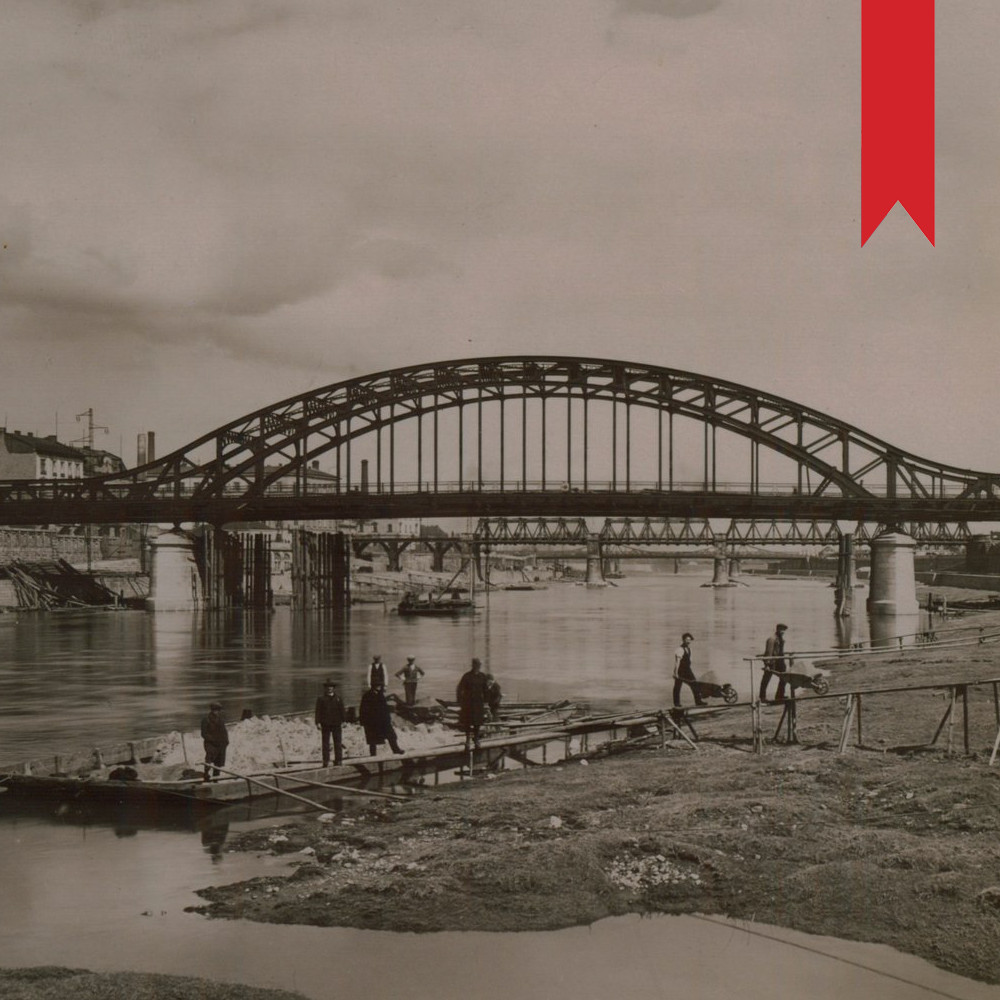
Three bridges – Piłsudski, Podgórski and Krakus, 1931
(ANK, ref. no. A-II-1287)
